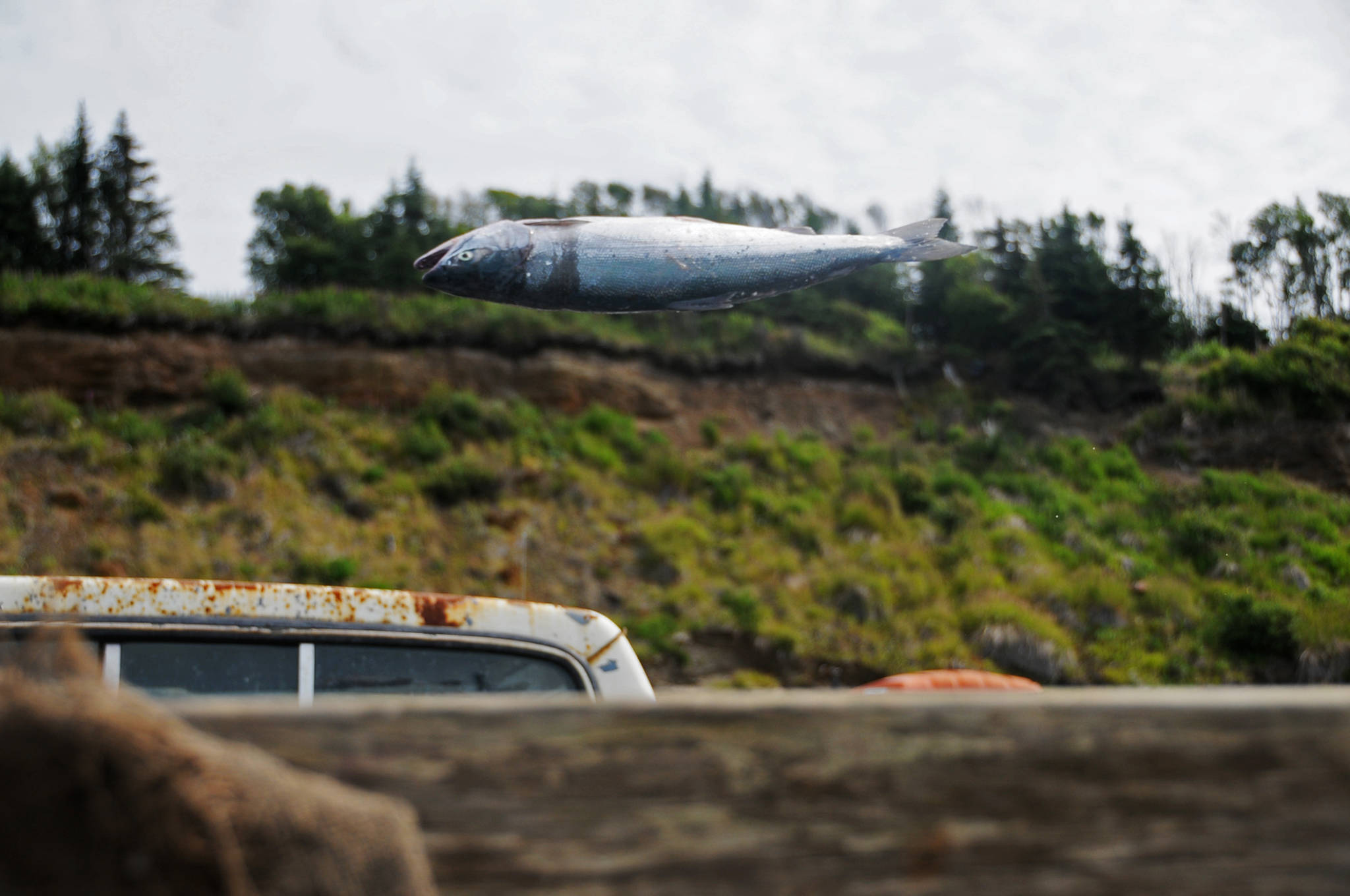The total value of commercial fisheries landings in Alaska didn’t change much between 2014 and 2015, but by species, salmon have been the millstone around the industry’s neck.
Total landings for all commercially fished species in the North Pacific region came out to $1.7 billion in 2015, according to the National Marine Fisheries Service annual report for the North Pacific region, released Tuesday. It hasn’t changed much since 2014, when total landings came in at $1.712 billion.
However, total value climbed for most species, some dramatically — crab is at an all-time high since 1999 for all species except for Dungeness crab. Salmon, however, is down 24 percent since 2014, or $133 million, despite some record-breaking total poundage.
The salmon market has been in trouble for the last several years. An ongoing embargo in Russia preventing the import of food products from the U.S., Canada, Norway and the European Union has heavily impacted prices, eliminating a major market for seafood. A strong U.S. dollar has also weakened demand in traditional markets for salmon such as the European Union and Japan, according to the NMFS report.
A record-breaking harvest in Bristol Bay flooded the market in 2015, but with prices close to 50 cents per pound, fishermen didn’t bring in much income that year. Prices rose a little in 2016, but not to pre-2015 levels, according to Alaska Department of Fish and Game exvessel value data. Alaska still leads the nation in commercial salmon catches, with about 1 billion pounds landed in 2015 for a total value of $413 million, according to the NMFS’s national fisheries management report, also released Tuesday.
Meanwhile, pink salmon supply increased dramatically from 2014, up about 95 percent, and chum salmon increased by about 49 percent, according to the Alaska report. Lower Cook Inlet saw record-breaking returns of pink salmon in 2015, as did Prince William Sound.
“With the Russia ban also covering farmed salmon, the market for wild caught salmon faced further pressure from that source,” the report states.
Herring value is also down, falling about 39 percent, or $4.5 million, between 2014 and 2016, according to the report. The Russia import ban also affected herring, and the cut in the Sitka Sound herring sac roe fishery by about half impacted total landing values.
Salmon and herring fishermen in Alaska may be having a hard time, but other species are seeing healthy increases in value. Crab landings revenue is up nearly 122 percent since 2014, with a total value of $284 million for all species. Southern tanner crab nearly doubled, climbing $20 million between 2014 and 2016 to $41 million. Dungeness crab was the only species that declined, but it came after a year of nearly record-high prices, according to the NMFS report.
Walleye pollock climbed by more than a fifth, or $87 million, for a total of $509 million. The total allowable catch for the Bering Sea/Aleutian Islands increased slightly, allowing for larger catches and increasing total value, according to the report.
Pacific halibut prices were the highest of all North Pacific species at $4.85 per pound in 2015, but with concerns about declining stocks, it also saw one of the greatest decreases in poundage — down 67 percent between 2006 and 2015, according to the Alaska report. Pacific halibut saw the largest revenue decline, about 49 percent in real value, between 2006 and 2015, according to the NMFS national report.
Alaska’s seafood sector supports about 53,400 full- and part-time jobs, none of which rely on imports, according to the NMFS national report. Altogether, the industry is worth about $4.4 billion in sales, $1.9 billion in income and $2.4 billion in value-added impacts. Commercial fishing contributes the largest portion of that, with 38,000 jobs, according to the report.
The increase in Alaska landing values follows the national trend — total landing values are up about 17 percent in real value between 2006 and 2015, according to the NMFS national report. Total pounds landed are were up about 2 percent between 2006 and 2015, Alaska still leads the nation in both total pounds and total value landed.
The season looks better for salmon fishermen this year as well, based on Fish and Game’s forecasts. Despite disastrously low pink salmon returns last year, Fish and Game is predicting rosier returns for Southeast Alaska, Prince William Sound, Kodiak and Lower Cook Inlet. They aren’t predicted to be record-breaking returns, but Fish and Game biologists are reasonably confident in the forecasts, and the colder winter breaking up the warm surface temperature anomaly in the Pacific Ocean — nicknamed “the blob” — may make for better pink salmon returns.
Sockeye returns are far below average for Upper Cook Inlet, where approximately 4 million fish are predicted to return in 2017, with a commercial harvest of about 1.7 million. Bristol Bay forecasts predict a return about 27 percent higher than the average, and Kodiak is expecting close to its average. Prices look to improve as well, with sea lice and algal blooms troubling the farmed fish sector in Chile, Scotland and Norway while demand continues to grow and the dollar weakens slightly. Suppliers have diminished back stock and supply this year may be lower, aiding prices.
Reach Elizabeth Earl at elizabeth.earl@peninsulaclarion.com.

